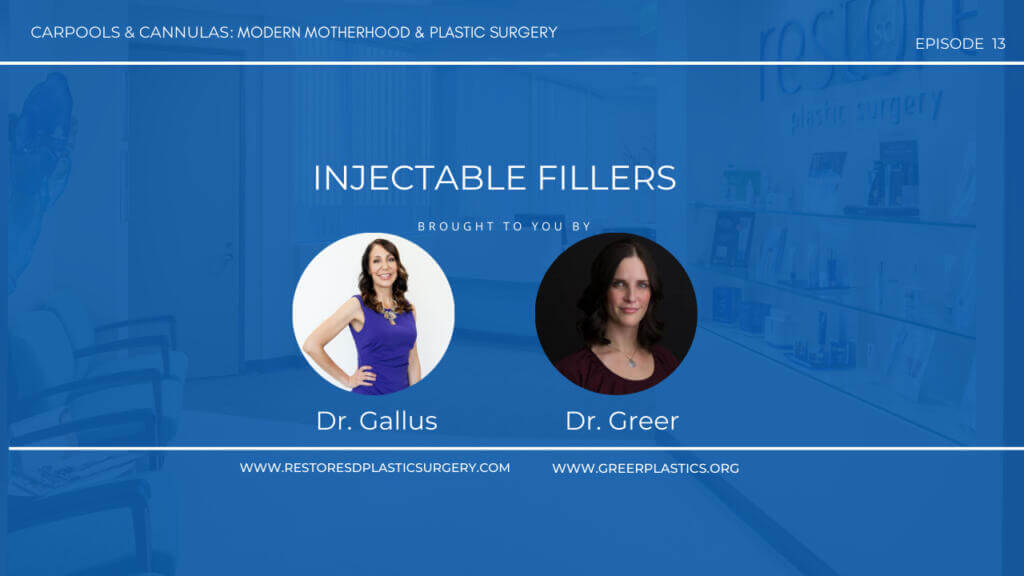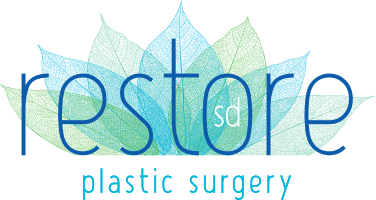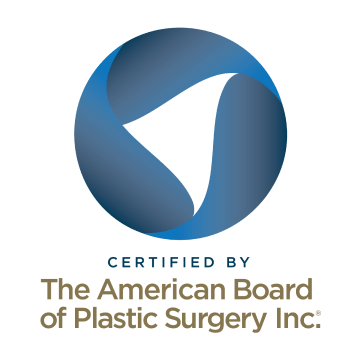On this episode of Carpools & Cannulas: Modern Motherhood and Plastic Surgery, Drs. Gallus and Greer discuss facial injectables (AKA fillers). They run through the different classes of fillers, the popular brands, and which ones they have personal experience with.
Transcript
Dr. Greer: All right. Hey, guys. It has been a while since we’ve done a live. And Dr. Gallus is gonna pop on in a second. I was a little late. It’s the classic, “I have time to do one more thing, but I really don’t.” That’s why I’m always five minutes late everywhere. I think I have time. All right. And I see her. So, let me invite her to join, if I can. There we go. And we’ll get her on. It’s been a little while. We are taking questions. So, if you have questions about things, put them in the comments. We will be happy to answer them. I wanna say we’re talking about fillers. Honestly, it’s been over a month since we’ve done a live because…let me think. One of my kids was having a meltdown, then Dr. Gallus was stuck in the OR and then I got COVID. So, it’s been a little while since we were able to get together.
Yeah. Let’s see. Waiting for Dr. Gallus to join. But if you guys have any specific topics you wanna hear about, I know we’ve talked about tummy tuck, we’ve talked about breast augmentation, I think even facelift, and covered kind of general ways that we do these surgeries, how we do pain control, what the recovery is like. Okay. I think Dr. Gallus is having… Oh, there. She came on her other account. Let me invite her there. See me figure it out. I hope you guys are having a good night. It’s 8:30 here Eastern time. Hey.
Dr. Gallus: Hey.
Dr. Greer: How are you?
Dr. Gallus: Of course, I had technical difficulties.
Dr. Greer: That’s okay. I did the classic like, “Oh, I have five more minutes.” And then I’m like, “Oh, crap. No, I don’t. Mm-mm.”
Dr. Gallus: Yeah. And then when I did it, there’s a new thing on Instagram now. If you double-tap on your account, you can switch between accounts.
Dr. Greer: Oh, yeah. I’ve seen that. So, you were on the wrong account?
Dr. Gallus: So, I was on the right account, and then I went to, like, Go Request, and I hit the wrong thing, and then I’m like, “Ah.” And then it just made me feel old.
Dr. Greer: Okay. You’re not old. I do the same, or I’m old too. That’s [crosstalk 00:02:14].
Dr. Gallus: You touch something on the screen and you’re like, “No, no. Take it back. Take it back.” How are you?
Dr. Greer: I am…
Dr. Gallus: It’s been so long.
Dr. Greer: I know. I was just giving a recap for everybody, like, I had a kid meltdown, then you were stuck in the OR, then I had COVID. It was like a month and half later.
Dr. Gallus: Then it was my birthday.
Dr. Greer: Oh, yeah, it was your birthday.
Dr. Gallus: Yeah. Last Wednesday it was like, oh, no, I’m not…my family will murder me if I’m like, “Hey, I’m just gonna do a quick Instagram Live.”
Dr. Greer: Yeah. It’s fine. You know what? We’ll sing later.
Dr. Gallus: Yeah. We did go out to dinner in a classic parenting fail. We went to a really nice restaurant, but I over… I don’t know. I didn’t think it… It was such a nice restaurant that there wasn’t a kid’s menu. And yeah, they were not into like bone broth and [inaudible 00:03:07].
Dr. Greer: It’s delicious.
Dr. Gallus: Anyway. So, there you have it. So, that was that. It was okay, but they were a little like, “Oh, what are we gonna eat? What are we eating here?”
Dr. Greer: They were like, “There’s no food. There’s nothing we like.”
Dr. Gallus: Yeah. I’m like, “Oh, you don’t want the tuna tartare? That doesn’t interest you?”
Dr. Greer: Sounds delicious. And then they were like, “There is a rot.” Well, yeah. It’s okay.
Dr. Gallus: Even the pizza was weird. So, it’s like, you could pick off the stuff, I guess. I don’t know.
Dr. Greer: I know. My kids are the same way, like, I’ll cook and they’re like, “No.”
Dr. Gallus: Yeah. And that’s an ongoing debate at home too, although we can, you know, bland it down quite a bit, but still my nine-year-old still will take plain pasta over anything else.
Dr. Greer: Yes. Our house too. It’s like pasta or macaroni and cheese.
Dr. Gallus: Mm-hmm. Yeah.
Dr. Greer: So, that’s fine.
Dr. Gallus: Whatever. All right. And you survived COVID.
Dr. Greer: I survived COVID. I was vaccinated so it was a breakthrough case. And I had the most mild symptoms. It was just like runny nose and sore throat, but I thought, “Well, I should test.” It came back positive a week before we were supposed to go to Disneyworld.
Dr. Gallus: Oh, no.
Dr. Greer: Yeah. So, that got rescheduled and my kids were so sweet. I took the test, I’m like, “Guys, I have COVID. We can’t go to Disney.” And they were like, “You have COVID? Are you gonna die?” They were so worried. I was like, “No. Bless your hearts, but we can’t go to Disney.” They were like, “Whatever.” So, it is rescheduled. I’m glad it happened before and not during because if we were in Florida and I got sick.
Dr. Gallus: Yeah. That’d be a drag. Also, did anybody else get sick or you were…
Dr. Greer: No. I wore a mask for the whole week, slept in a different room, ate in a different room. And so far, everybody’s good. My husband is vaccinated, but kids are all too young, so they got to hang out while I was sick and then stay at home for another week of quarantine. So, they really enjoyed that.
Dr. Gallus: Right, right, right. Yeah. I mean, that’s a good gig because they feel good.
Dr. Greer: Yeah. Yeah. They liked it, I’m like, “But I have three kids at home and I’m sick. It’s not fun.”
Dr. Gallus: That’s not a party.
Dr. Greer: No.
Dr. Gallus: Unless you put everybody in front of YouTube for the entire time, which is nuts. Also…
Dr. Greer: We may or may not have done that.
Dr. Gallus: Watched a movie during the day or something from…
Dr. Greer: Many of those. Many of those. Yeah. But it was all right. I am like mostly back to normal now. I was tired for a while, but thankfully, I’m okay.
Dr. Gallus: Yeah. I know. I’m angling to get my booster, actually, because I’m trying to…
Dr. Greer: I’ve been thinking about it, although I had my turn in at Pfizer, but I’m good now. I’m boosted.
Dr. Gallus: Yeah. Yeah. Now you’re boosted, for sure. Yeah. My sister actually just had her booster and they gave her the flu shot and the booster shot at the same time, which is…
Dr. Greer: That sounds awful.
Dr. Gallus: She did fine.
Dr. Greer: Is she good? I got my flu shot yesterday and I was kind of worried just having had COVID in a couple of weeks and it was totally fine.
Dr. Gallus: Totally fine. I do need to knock that out too. Anyway, well, do you wanna talk about…we were gonna talk about supplements.
Dr. Greer: Yeah.
Dr. Gallus: Or we could talk about…
Dr. Greer: But then we kind of figured that was a jinx topic because it didn’t work out so many times.
Injectable Fillers
Dr. Gallus: I don’t think we’ve talked about injectables. Have we talked about filler? I honestly can’t remember. If we did, it’s…
Dr. Greer: It’s been so long if we did. I’m sure it’s all new.
Dr. Gallus: Okay.
Dr. Greer: So, yeah. Let’s talk anything that you can inject in your face. And actually, this is interesting too because the FDA just released that statement this week about Hyaluronic. I don’t remember how they phrased it, but basically, it’s using a dermal injector, which I have one. I don’t use it anymore, but I used to use it for steroids and scars. And dermal injectors just send a high-pressure injection with no needle and they just use them for vaccinations, I think. So, there were med spas using these to inject filler. And I’m not sure why. Was it just there’s no needle?
Dr. Gallus: Yeah. So, it was marketed. I remember it becoming a thing maybe 2018, 2019 and I was kind of intrigued, and then I looked into it more and I was like, “Oh, no.” And now I see it’s obviously not a great idea. But it was marketed as, like, a needleless lip injection…
Dr. Greer: Okay. It sounds…
Dr. Gallus: …because it’s blowing the product.
Dr. Greer: …possible in theory, but, like, in reality, you can’t control how deep it’s going. And you’re pushing a product that’s gonna stay in place for several months and could grow bacterial biofilm through the dermis. With a needle, you know, you’re like, it’s minimal skin contaminant as opposed to all of their products being pushed through.
Dr. Gallus: Shoving it in. Yeah.
Dr. Greer: Yeah. So, the FDA just released a statement saying that hyaluronic acid in filler products should not be pushed through a dermal injector. And I saw a couple of med spas were like that was their whole big thing.
Dr. Gallus: Right. That’s their selling point. And also I think the more I looked into it, I got the impression that it wasn’t painless or reduced swelling.
Dr. Greer: I mean, it’s pretty traumatic. As I said, I’ve used this on hypertrophic scars with steroid and it hurts having liquid blasted through your skin, and it bleeds, and it’s traumatic, and not very precise at all.
Dr. Gallus: It’s a good idea for a steroid injection, so, in the scar tissue, I kind of like that.
Dr. Greer: Yeah. It isn’t. It’s not. I used it for a while, but, like, it’s kind of painful for people and, honestly, sometimes it just works better injecting with the needle.
Dr. Gallus: Mm-hmm. Yeah. Well, okay. So, then let’s talk about… I mean, I think every time I turn around, there’s a new filler out.
Dr. Greer: And Galderma is creating half of them. Galderma has so many fillers. My rep is not watching tonight, but Sam, you know I love you. But my goodness. There’s Lyft, Defyne, Refyne, Kysse.
Dr. Gallus: Contour.
Dr. Greer: Contour is the new one. It’s fluffier. It’s got bigger particle size with the same amount of basically, like, structural support. And then Kysse is more elastic as is Refyne. Defyne’s got like good structural support like Lyft, but we’re getting into, like, very fine points where, honestly, I can’t always tell the differences when I’m injecting.
Dr. Gallus: Right. Great. No, I agree. So, they’re trying to tailor the products to kind of specific areas of the face, but it’s interesting there are still some areas of the face that there is no FDA approval for, right, tear trough comes to mind, or they have…
Dr. Greer: I think I wanna say regular Restylane is FDA approved for tear troughs as is Belotero.
Dr. Gallus: Belotero. I was thinking about that. But yeah, some…or Volbella might be as well, honestly. I have to go back and…
Dr. Greer: Yeah, I’m not sure.
Dr. Gallus: Or they’re pending that. So, yeah.
Dr. Greer: Because I never got into.
Dr. Gallus: Yeah. Well, I heard about Volbella was the original…the original syringe was 0.55ccs. And I’m like, “What am I gonna do with that?” And then they switched to a 1cc. But yeah, I don’t… We were talking about it. So, let’s go by body or face part. Let’s maybe break it down that way because that makes more sense to the consumer. Right?
Dr. Greer: Right.
Dr. Gallus: There are the major companies. There’s Allergan which produces the Juvéderm line, and then Galderma.
Dr. Greer: Galderma. There’s the Restylane. There’s Merz, which has Radiesse and Belotero, and then there’s RHA which is the new player on the market and their product is…that’s revamp, their product is RHA.
Dr. Gallus: Right. And then also there’s Bursa, which I used a little bit.
Dr. Greer: Oh, yeah. I don’t know that one at all. Yeah. And those are the major companies. There’s… Who is it who makes, like, Bellafill and ArteFill? I’ve never used them. They’re [inaudible 00:10:53].
Dr. Gallus: Yeah. And then Sculptra. Yeah.
Dr. Greer: Oh, yeah. Sculptra I use, but that’s Galderma.
Dr. Gallus: But you’re right. Bellafill and ArteFill, like, have collagen and you have to do testing and…
Dr. Greer: Yeah.
Dr. Gallus: Anyway. Okay. So, let’s talk lips. And I usually categorize patients into they want lips, they want structure, they want volume, they want peel, or the people who want a little bit of lip filler, but they’re afraid to look like they have a lip filler, which is not overthought.
Dr. Greer: Yeah. I also then have the patients who really just want to treat the perioral lip lines and want better definition. And then there’s also a subset of patients who just have kind of wrinkly lips, and they’re often younger and they don’t need a lot of volume, but it just fills out what’s there and gives a little bit more. See, there are so many subtleties, even just with lip filler, guys. That’s why you need to go to a specialist.
Dr. Gallus: Right. And not get whatever product they happen to have stocked up. So, what are your kind of…what are your favorite go-to’s for lips then? What would that be like?
Dr. Greer: If I have someone who is new and just wants a little definition, I actually will use the Restylane 0.5 because it comes in a half cc and that’s the perfect amount for someone who just wants a little. I will also use Silk if they have a lot of little fine writings because Silk is especially formulated for really superficial injection, it won’t show with what’s called a Tyndall effect where it looks blueish. So, that’s nice for really little fine lines if they have a lot of fat around their mouth. If they want a really, really natural look, I like the RHA 2 or RHA 3 or even Kysse because those are all more flexible, so they look really natural with motion. How about you?
Dr. Gallus: So, yes. I don’t usually do the half syringe of Resty, but that’s a good idea. I do like silk for the fine lines. I really like that product. RHA 2 or Kysse for people who don’t want too much peel. And then my other patients who want to look like they’ve done something to their lips, I really like Juvéderm’s Ultra Plus.
Dr. Greer: Yeah. I don’t carry Juvéderm anymore, but yeah, we used to use that.
Dr. Gallus: Yeah. I think that gives a lot of bang for your buck. You could use Restylane Refyne instead. That’ll give you some structure.
Dr. Greer: Yeah. And honestly, regular Restylane is who I use if people want a good pop because it gives good structural support. So, when we talk about fillers, there’s three main…let me think of the word, attributes that you talk about. And right now we’ve all been talking about hyaluronic acid fillers, which is a normal component of your skin and soft tissue, but they vary in particle size, so how big the little particles are, how much they’re cross-linked. And crosslinking is just connection between molecules, any polymers, all these little molecules held together, thinking back to science days. The more crosslinking, kind of the stiffer it is, and the less crosslinking, the more flexible it is. And then there’s G prime and you’ll hear reps talk about G prime all the time. But that’s basically like how stiff and how much structural support. So, you can have something that offers a lot of structural support, but it has this small particle size and it’s really flexible. It’s interesting. We actually just have a chart taped to the wall with all of the fillers by flexibility in G prime, but it doesn’t have particle size on it.
Dr. Gallus: I know. Or the other factor, which is hyaluronic acid concentration. So, they do vary the amount of the actual product in there, and then that can vary too. But you can have low hyaluronic acid concentration, but maybe a lot of cross-linking or low concentration. And not a lot of cross-linking, that usually means how much water they’re gonna take on, and then how much…what that cross-linking is. So, that’s proprietary for each company, and so in terms of what that ends up looking like. But in general, there are some products like I would not and I don’t think most people would put Voluma in the lips or something, you know, that’s a stiff foam product.
Dr. Greer: Yeah. It’s gonna look really fake.
Dr. Gallus: It’s not gonna move with your mouth. Right? So, I think Kysse was…Restylane’s Kysse was advertised as having that expression technology, so it’s nice and flexible, so it moves with your mouth and you don’t have, like, stiff, weird, goldy horns and first wives club.
Dr. Greer: Yes. It’s also supposed to last a little bit longer, like, around 12-month mark.
Dr. Gallus: So, if you remember when fillers first came out, they were six months was…I mean, six months was like, you’re gonna get six months out of it. Right? And I feel like all this crosslinking and the products have advanced enough that most people do really well in, you know, once a year.
Dr. Greer: Yeah. And especially RHA last even longer, up to 15 months. I don’t remember if there was a retreat. This is another thing the reps always tell you, like, “Oh, yeah, they say nine months, but they retreat,” meaning they get another injection. It’s kind of funny. Basically, they’re all trying to differentiate themselves in a market where there’s not that much space to be different.
Dr. Gallus: Yes, I agree with that. Yes. The retreatment protocol. So, yeah. What else was I gonna say? So, lips, I would say, yeah. So, we’ve kind of covered that. What you want is volume and smoothing out, hydration. I do use a fair amount of Juvéderm products. So, I think Volbella is pretty soft and we’ll do more of, like, an internal hydration. I don’t see a lot of patients that want that, but sometimes that’s a nice option, or Vollure, so something smoother. But I do like Kysse for that as well. And, you know, you’re counting on it lasting, hopefully, 15 months.
Dr. Greer: Yeah.
Dr. Gallus: And then do you inject with a needle or a cannula?
Dr. Greer: I do a needle. I’ve never loved cannula. I feel like it just is not necessarily less traumatic. And often you’ll need a small enough cannula that it acts like a needle anyway.
Dr. Gallus: Right.
Dr. Greer: But my big question, what do you do for pain control because lips hurt?
Dr. Gallus: Yeah. So, I apply numbing cream. Dr. Taylor who does injectables at my office as well is not a fan of numbing cream. I know. But she insists…
Dr. Greer: I had lip filling without numbing cream once in my residency…
Dr. Gallus: Oh, I started…
Dr. Greer: …because we didn’t have numbing cream and I didn’t want dental blocks. I would not recommend – zero out of five stars. I didn’t flinch because, like, my junior residents were all standing around watching my co-chief inject, but the tears were just running down my face. It hurts so much. And I had three kids without an epidural and that still hurt a lot.
Dr. Gallus: Yeah. I’ve done… I don’t think I’ve ever used a numbing cream for my lip filler, but I have a… Yeah. I have a weird pain tolerance issue. So, that’s just… I don’t use myself as a barometer for what any normal person would want. I’ve done it myself. I’ve done… So, I’ve done myself with needle.
Dr. Greer: Yeah.
Dr. Gallus: And then I’ve also done cannula to myself to try and…and it’s theoretically easier because it’d be like one pass.
Dr. Greer: Yeah.
Dr. Gallus: But I agree. I feel like that blunt cannula that’s going through your soft tissue is kind of painful.
Dr. Greer: Yeah. I’ve done my own lip filler, but always with copious numbing cream. I also have a little… I’m trying to think what it’s called. It vibrates. It looks like a little bicker and it vibrates. You put that right next to it where you’re injecting and that helps a lot.
Dr. Gallus: And ice. Right. So, that’s a distraction technique. I do like ice. I think ice is also super helpful to numb the area first.
Dr. Greer: Yeah. I actually do all three. I do topical for 10 minutes, wipe that off, hold ice, and then vibration and injection.
Dr. Gallus: And so does somebody hold the vibration while you’re doing? You do?
Dr. Greer: No. I use it as, like, my second hand.
Dr. Gallus: Okay.
Dr. Greer: So, I’ll just put it up, like, right next to it and use it to study. And this was like…when we had just reopened it for COVID and things were quiet, is when I started playing around with all these techniques. So, I’m like, “Yeah. I might as well get really really good at this.” The vibration helps a ton just from doing my lip filler. And the topical we used too. We had played around with different topicals and the one we have now is extra strong. We use it for our Halo peels and it’s nice.
Dr. Gallus: Yeah. Ours is pretty strong as well. I think that makes a difference. And less is more just a thin layer rubs in and then it usually works like slathering on the numbing cream is usually not helpful. Okay. So, lips. How about…what’s your most common area that you put filler, would you say? And if it’s lips, what else and something…
Dr. Greer: Besides lips, it’s gonna be smile lines and then marionette lines.
Dr. Gallus: Okay.
Dr. Greer: Yeah.
Dr. Gallus: And what product do you like for the smile lines?
Dr. Greer: It depends on the depth and how mobile there are. If it’s somebody where it’s just like kind of a wide depression, then I love Restylane. If it’s, like, little fine lines, then I like Lyft. Or not Lyft. Sorry. Silk or RHA 2. In the RHA, products are really nice if it’s a very mobile area.
Dr. Gallus: Right. Because they do. They’re very flexible.
Dr. Greer: Yeah. They’re super flexible. They don’t look stiff. If you’ve ever seen someone smile and their filler, like, really doesn’t move, it’s not an awesome look.
Dr. Gallus: Yeah. I tend to like to put in Ultra, Juvéderm Ultra, which is a little softer. You can do Defyne there, Restylane Defyne sometimes. There is lots of options. I also will try to get people to do, like…
Dr. Greer: Their cheeks.
Dr. Gallus: …cheeks, right, because that has a lifting effect, and then you’re adding volume where you need the volume in some…
Dr. Greer: Right. Because, you know, it’s not that you lack volume, it’s that your cheek fell down.
Dr. Gallus: Yes.
Dr. Greer: Put some filler between, you’ve got your middle fat pad and your malar fat pad, and there’s always a little crease here, but as the fat pad descends, you get more separation. So, putting some filler in and lifting will help correct the smile lines. But it does take a fair amount in the cheeks.
Dr. Gallus: Right. So, that…
Dr. Greer: You might have to find a syringe to give a Lyft.
Dr. Gallus: Right. So, that’s the… The companies will encourage you to do it that way because then you’re putting, like, four syringes in which is expensive.
Dr. Greer: It does look amazing, though. If you have a patient who is like, “Let’s use whatever it takes. I don’t want surgery,” you can do remarkable things with a lot of filler.
Dr. Gallus: Right. Right. Yeah. Eight or nine syringes. It’s a lot. But you can restore it because a lot of it is a loss of volume or volume not in the right spot.
Dr. Greer: Yeah.
Dr. Gallus: Yeah. But it is…you have to pick your patients. Some patients are, like, half-full cheeks to start with, so then you don’t wanna create a weird chipmunk look. Again, I think the most important thing is, there’s an image of somebody that rests, and then like you said when people smile and you start seeing weirdness. You have to take into consideration what they look like.
Dr. Greer: Yeah. I’ve seen… I remember the Merz rep when I first came out into practice. They can get free products whenever they want and the cheeks were like a razor blade.
Dr. Gallus: Oh, yeah.
Dr. Greer: And she would smile and they wouldn’t move. They were so filler.
Dr. Gallus: You’re like you can cut something with that.
Dr. Greer: Yes. Or just the…
Dr. Gallus: So now I think they’re…
Dr. Greer: …best in the shelf.
Dr. Gallus: They’re taught… I mean, some people like that look. But unless you’re a real housewife, it’s probably not a good…it looks unnatural.
Dr. Greer: Yes.
Dr. Gallus: So, I do like…
Dr. Greer: Do you see people who truly have that cheek? Demi Moore I think actually does have that cheek and almost no one else.
Dr. Gallus: Yeah. And so they’re talking now about when you fill this area out to also consider the jawline. So, that’s how you end up using all these syringes, right? So, what it takes to pull this up, then you’re gonna balance that out with this lower area, lower cheek, and then jawline. And so then that’s how you start adding, you know, tons of filler to someone’s tab. But you can also go slow, right? So, you can do a little bit at a time, you know, say, “Okay. This is gonna be a journey. We’re gonna put, you know, a syringe in. You’re gonna get a little bit of a result, and then we’ll keep building on that.” Because I do think those products last a long time. It’s generally kind of deep. It’s not moving around as much as your lips, so 12 to 18 months is fair, and then you can kind of stack things.
Dr. Greer: Yes.
Dr. Gallus: That’s kind of… I love Voluma for that. The temples I think are an under-treated area, but I get it, it’s an expensive area to treat without, like, a lot of bang.
Dr. Greer: And I think people don’t notice. They don’t really look at their temples and notice they’re hollowing out.
Dr. Gallus: Right. So, yeah. Nobody comes in and it’s like…very few people are like, “Can you address my temple?”
Dr. Greer: Yeah. They notice the lines and then you have to point out like, “Well, you don’t have any volume here and we wanna restore that heart shape that a youthful face has.”
Dr. Gallus: Yeah.
Dr. Greer: So, one of my common questions that I’ve been getting like this last year, I’d never heard before that, is just filler migraine. Do you hear…are you hearing that question more now? I don’t know if it’s been on the internet, you know, according to articles about migrating filler. It’s really kind of fascinating because there’s not a lot of actual published literature on the topic.
Dr. Gallus: Mm-hmm. I think my sense is that it’s stemming from the fact that filler in the tear troughs, which is another Instagram popular area to treat and not necessarily is the go-to for, like, if you’re just gonna put one syringe of filler, sometimes teardrop is not where you wanna put that syringe. But since it’s such a tricky area, I feel they’re sticking around longer. And then if it migrates up and gets caught in the muscle around your eye, it starts to create havoc. So, I think that’s part of it. And same thing, if you use the wrong filler in the nasal labial fold and it’s in an area of movement…
Dr. Greer: And agile. Yeah.
Dr. Gallus: Yeah. And it’s migrating. But it’s really… I mean, you’re putting product in there and it’s gonna get squished with the muscles of your face.
Dr. Greer: Yeah. There haven’t really been any studies on this except there was like a study on intraocular filler used to, like, build up the orbital… It was ophthalmology. So, it was nothing cosmetic. And seeing if that had moved around because I did a literature search on this. I also hear the area, like, people talk about it bleeding into your upper lip. I don’t know that that really happens. I’ve never had a patient come in and have the filler, like, totally visibly somewhere else. Sometimes you’re gonna have swelling somewhere else, especially lower down and upper lip. I will actually inject filler under here because you lose volume there and you need some structural support. So, I think a lot of times it’s like weird swelling or things just not moving naturally. Hi, Whyte. I see you. But I’ve never seen filler actually move from one place to another.
Dr. Gallus: Oh, yeah. No, it’s not going from your lip to your cheek, right?
Dr. Greer: Yeah.
Dr. Gallus: No. I think the migration I’m thinking of is it’s just bunching around the eye.
Dr. Greer: Yeah. Well, in the eye, the teardrops are very tricky. And in my office, I inject those, no one else does. Because you’ve got the orbital septum. And if you end up retro-septal versus anterior to the septum, the filler can kind of, like, spread along the septal planes and do weird things. But when you…as you’re injecting it, you see it spread out. And it’s not this super precise thing. If you’ve ever watched injections closely, you can, like, see the filler spreading out from the end of the needle.
Dr. Gallus: Right. Yeah. No, I agree. So, it’s gonna move around. But that would be my sense. And I have had a lot of requests for tear trough filler lately. And I think in some patients, again, it’s…you know, might be indicated, but a lot of times it’s kind of filling out this area.
Dr. Greer: Yeah.
Dr. Gallus: Yeah. And I think I told them, “Listen, the danger is that you start looking like Nicole Kidman,” which we could spend a whole half hour talking about, but I feel like someone filled out her tear trough, they filled out her cheek, like, they filled out her jawline, filled out her… So, now I feel like she’s just one smooth, continuous surface and it looks weird. It starts to look weird.
Dr. Greer: It does. And that’s usually really just gonna be facelifting, but everything moved back up where it was.
Dr. Gallus: Right. She’s probably had one, but I don’t know.
Dr. Greer: Probably. Probably just shifted all the filler.
Dr. Gallus: Yeah. Raised the filler. Well, that was good, I think. I’ve seen people try to do filler behind the eyebrow. Again, that’s, I think, for people who have money to set on fire. You can put some filler behind here to push the tail or brow out. It’s super subtle. It’s like putting filler in your ear lobe if you have a crease.
Dr. Greer: I’ve done ear lobes. It’s nice because… I even thought about doing my own because you can see my earrings tilt down a little.
Dr. Gallus: Oh, it’s pulled in.
Dr. Greer: And I thought about I might just…a little just to get my earrings out straight. They lose volume. The other area I will do is I’ll do a glabellar crease. If you’re one of those people who didn’t have Botox until you’ve had that deep line that’s indented and is not moving, it does not go away the first time you do toxin. And I love bringing people back a week later after the toxins kicked in and you can just do a little bit of filler. This is, again, where I’ll use the half syringe of Restylane. And it kind of pops out the den, and after that they’re good. And toxin will do the trick. And it kind of…it will speed that process along, but you have to be super careful because you’ve got arteries and veins here that if you inject, it can go back to your eye and cause blindness. So, you definitely…that’s one of those areas, like, I’m the only one in my office who will do it. My nurses do not do glabellas.
Dr. Gallus: Yeah. And otherwise, yes. That is not for, you know, JV team to do, for sure.
Dr. Greer: Or CDL.
Dr. Gallus: Well, awesome. I’m glad we were able to get back on.
Dr. Greer: I know. It’s been a while.
Dr. Gallus: All right. So, we’ll agree never to talk about supplements.
Dr. Greer: Yeah, never. We should try to do a live when we’re… You’re going to ASPS, right? Yeah.
Dr. Gallus: Yeah.
Dr. Greer: That’ll be fun to hop on for a quick live and, actually, we get to meet in person. So, I’m excited.
Dr. Gallus: Yeah, that should be good. Are you getting there Friday, Thursday?
Dr. Greer: I am getting Friday and leaving Monday because I’m on a panel, like, Monday morning, so I’ll be there Friday.
Dr. Gallus: Yeah, yeah. I’m leaving Sunday because I gotta make it back for Halloween. But yeah, we should definitely do a little…
Dr. Greer: I forgot it was Halloween. And I think my kids will survive.
Dr. Gallus: Oh, yeah. It’s like Christmas, but it’s a big deal here. So, we’ll see.
Dr. Greer: Awesome.
Dr. Gallus: All right. Well, yeah, we’ll come up with something to talk about and maybe we’ll do it from ASPS then.
Dr. Greer: Awesome. That sounds fantastic. That’ll be in, like, three weeks or so.
Dr. Gallus: Yeah.
Dr. Greer: Oh, great. Cool. Awesome. Well, I will see you in person very soon.
Dr. Gallus: Okay. Bye. Have a good night.
Dr. Greer: Bye. You too.
Dr. Gallus: Bye, everybody.
About Restore SD & Dr. Katerina Gallus
As the Director of Restore SD Plastic Surgery, board certified female plastic surgeon Dr. Katerina Gallus has over 15 years of experience helping San Diego women enjoy head to toe rejuvenation with face, breast and body procedures. After a successful career as a Navy plastic surgeon, Dr. Gallus founded Restore SD Plastic Surgery with the intention of creating a welcoming space for anyone seeking cosmetic enhancement.
Restore SD Plastic Surgery offers popular facial rejuvenation procedures like facelift & neck lift, facial fat grafting, and eyelid lift; breast augmentation with implants, breast lifts or breast reduction; body contouring procedures such as tummy tuck, liposuction, mommy makeover, and Brazilian butt lift (BBL), as well as aesthetician services, BOTOX, injectable fillers, and laser treatments.









